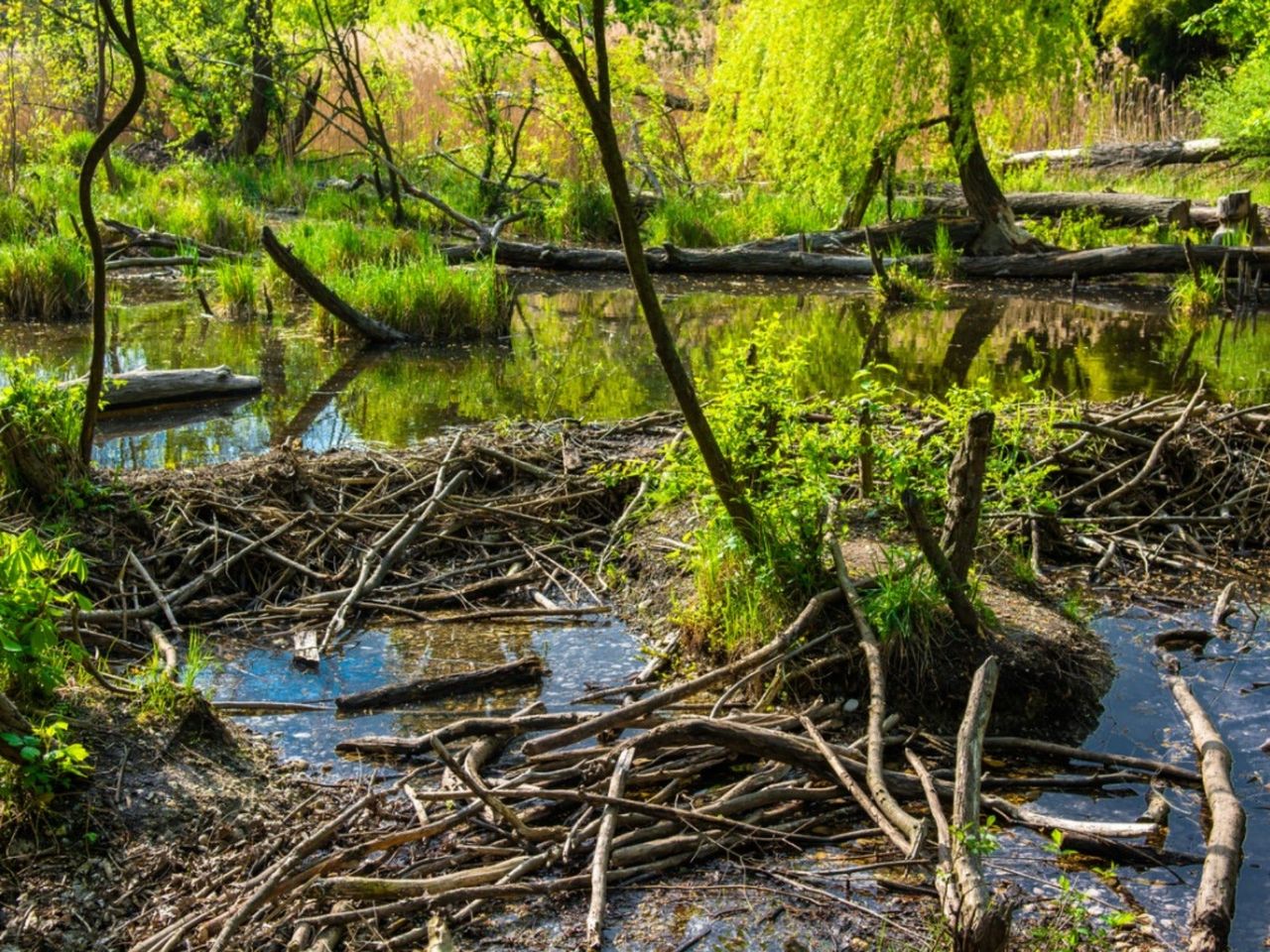How Beaver Habitats And Ponds Can Help Landscapes


Beavers are an important part of the ecosystem, helping to manage wild waterways. Beaver populations were once critically low, but conservation efforts have seen the animals regain their footing in the environment. Beaver ponds provide a host of benefits, both while active and when in disuse. They provide forage and cover, and encourage certain plant life, which is why preservation of the habitat of a beaver is crucial. Moderate human intervention can make a beaver dam pond a diverse, healthy wetland.
Beavers were once heavily trapped for their fur, leading to a large decrease in the population. Combined with human habitat destruction, the mammals were once in danger. But they have made a recovery and pose an important factor in healthy waterway management and encouragement of wild species.
Beaver habitat hosts a variety of aquatic invertebrates, fish, mammals, and flora. Beaver management can help secure the positive influences gained by these animals' dams.
The Benefits of Beaver Habitat
Beavers build dams as homes. Their layered structures of logs, sticks, and other materials effectively slow a running waterway. This in turn creates cleaner downstream water, habitat, breeding and nesting sites, and provides food from aquatic and riparian plants.
Beaver dams are considered active for 30 years. During the late phase of the “active” period, older trees have died, broken off, or been cut down. This leaves a more open, less shady site with a wider pond. When abandonment occurs, the dam will eventually break and moist woodland replaces the pond. After a dam is abandoned it still holds benefits. The logs provide holes and cover for certain species. Over time, moist bottomland develops, hosting many species of flora and fauna. Nesting birds find food in the water and plants, while owls, songbirds, and bats have forage. Wood ducks, in particular, find nesting and brooding sites near habitat that is perfect for ducklings. Managing such habitat to encourage the animal and plant species can go on long after the beavers have left the site.
Managing Active Beaver Ponds
While the pond is active the beaver will maintain its dam, repairing it as needed. An active pond supports animals like ducks, geese, otters, raccoons, cavity nesters, amphibians, reptiles, and fish. Installing a drainage system helps manage the level of the water.
Drainage systems can be made with logs, PVC, or other materials. The Clemson Beaver Pond Leveler can be installed to ensure the drainage site does not get blocked by debris. It is simple to construct with PVC, mesh wire and an elbow joint. The intake is underwater and caged with the mesh wire. For this system to work correctly, the downhill side of the dam must be breached to create a channel for the PVC. In active dams, the beaver will swiftly repair the hole in the dam. Culvert guards and fences can also help beaver ponds from overflowing and impacting infrastructure.
Gardening tips, videos, info and more delivered right to your inbox!
Sign up for the Gardening Know How newsletter today and receive a free copy of our e-book "How to Grow Delicious Tomatoes".
Enhancing Beaver Ponds
Beavers will regularly repair their dam when damage occurs. Over time the dam and the pond will become larger. Trees and other plants that were flooded will die and fall, leaving snags and holes as habitat. But forage will decline. To encourage plant life, it’s a good idea to drain the pond and plant flood tolerant plants.
Install native vegetation around the edges of the pond. In fall, allow the pond to fill again. Place nesting boxes for wood ducks with mesh protection from predators. Use culvert guards and fences to keep beavers away from infrastructure. Encourage streamlets and other flow through water to allow fish passage. Minor human intervention can allow the beaver-led ecosystem to flourish and can encourage many forms of life while protecting land.

Bonnie Grant is a professional landscaper with a Certification in Urban Gardening. She has been gardening and writing for 15 years. A former professional chef, she has a passion for edible landscaping.